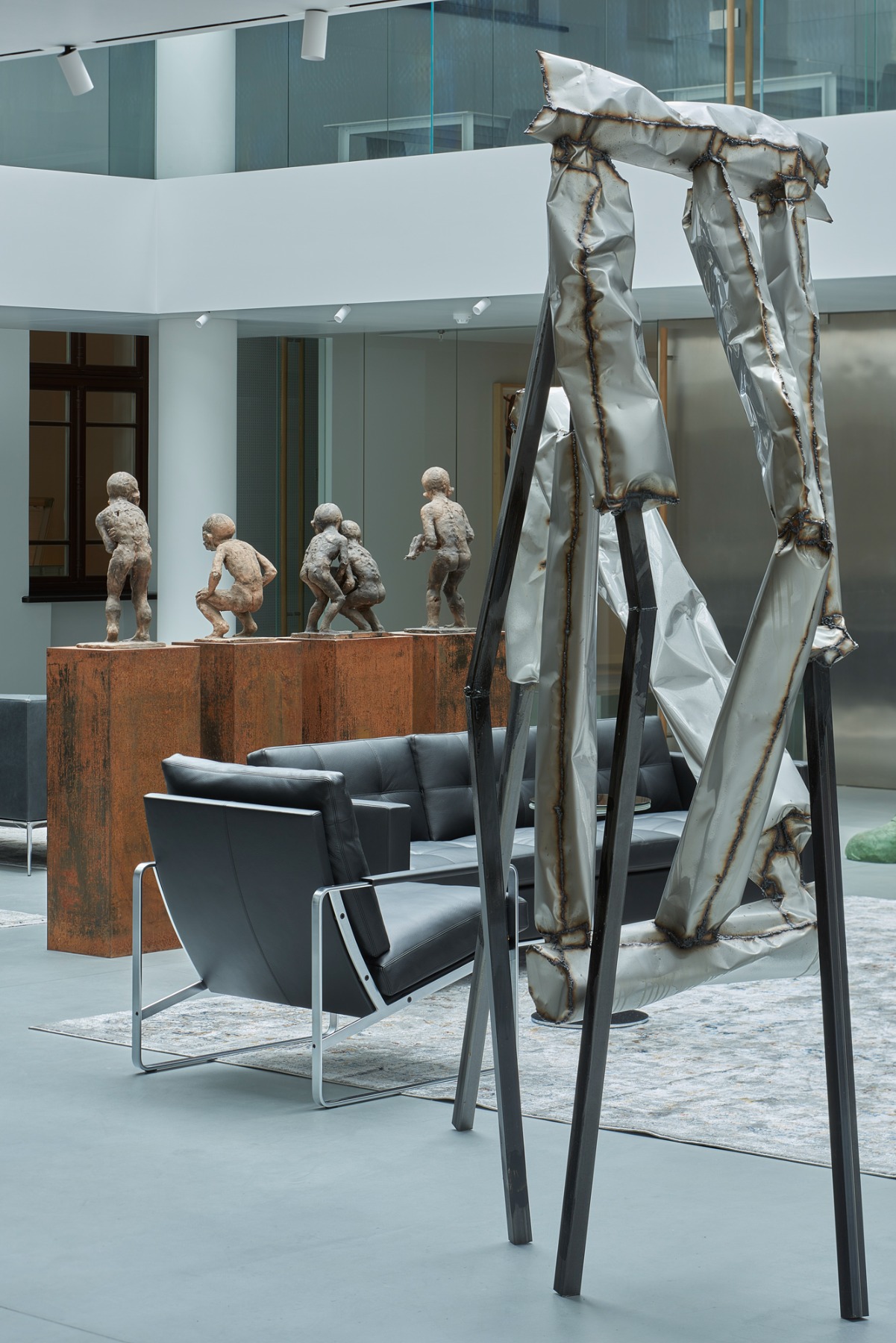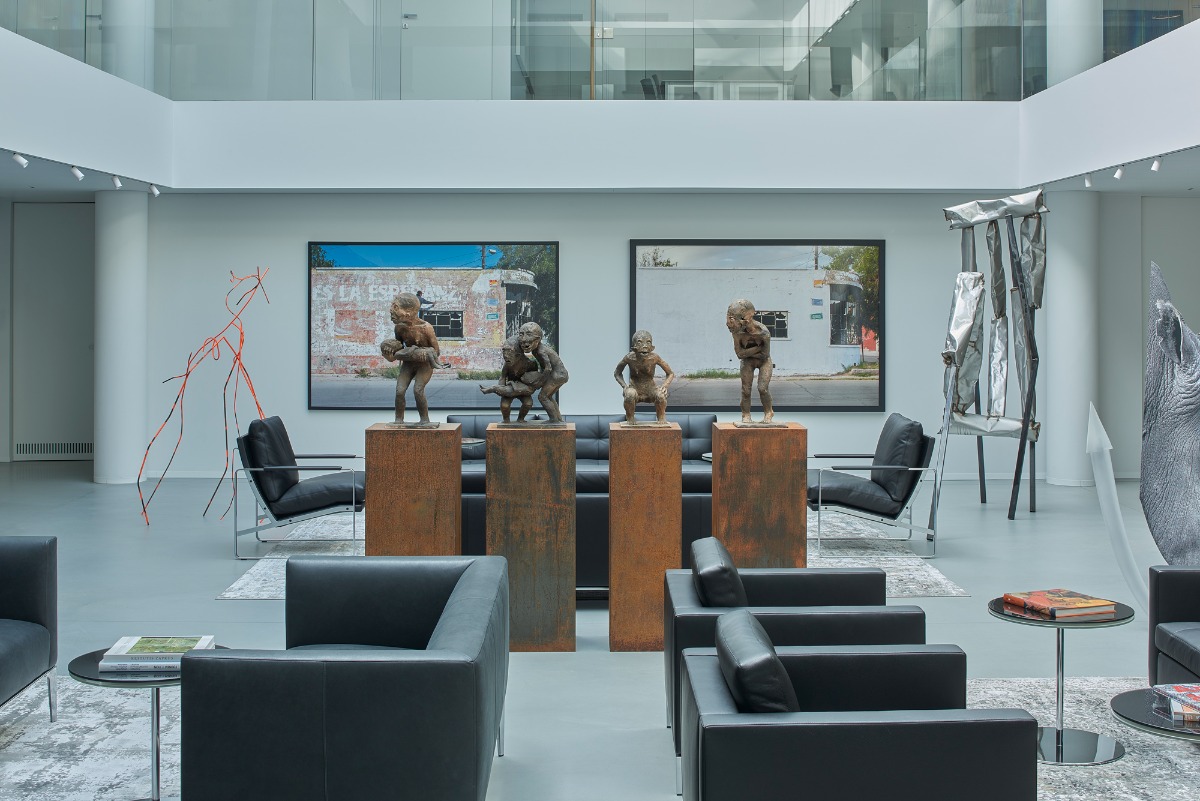
An art house for work
Karolina Tomkevičiūtė
The office-gallery D9: Artsy Office has opened in Vilnius
In the middle of May, in Vilnius, at A. Domaševičiaus St. 9, the office-gallery D9: Artsy Office will open its doors. The building itself has a long and fascinating history. Different owners made changes to its spaces, interior, and colours, numerous times. The new owners created this space with the needs of business in mind and faced the challenge of adapting the old building to modern needs, while also accommodating an art collection. The architect studio IMPLMNT architects was invited to create the D9: Artsy Office. Collectors Rita and Vilius Kavaliauskas, architects Aurimas Syrusas and Greta Šidlauskaitė, and the Director of the Lewben Art Foundation, Ugnė Bužinskaitė, talked to us about how this office-gallery project was born.
How did you come up with the idea of settling in this old building? After all, before that, your business and part of the collection of the Lewben Art Foundation were located in a radically different space, in one of the skyscrapers in Vilnius.
V. Kavaliauskas: We have long been looking for premises where we might bring all the companies involved and retrieve all the works of art that have been in storage until now, together under one roof. We fell for the historical part of the building, as well as the huge atrium, ideal for larger sculptures and installations.
When the owners of the building offered us to settle in this space, the idea and task for the architects was born immediately – an open, clean, museum-like interior, made unique by the works of art. The design concept was to preserve the uncovered painting in the old part, and to make the area of the new extension, light, clean, transparent, and able to adapt to modern works of art.
Collectors Rita and Vilius Kavaliauskas. Photo: Dovile Butenaite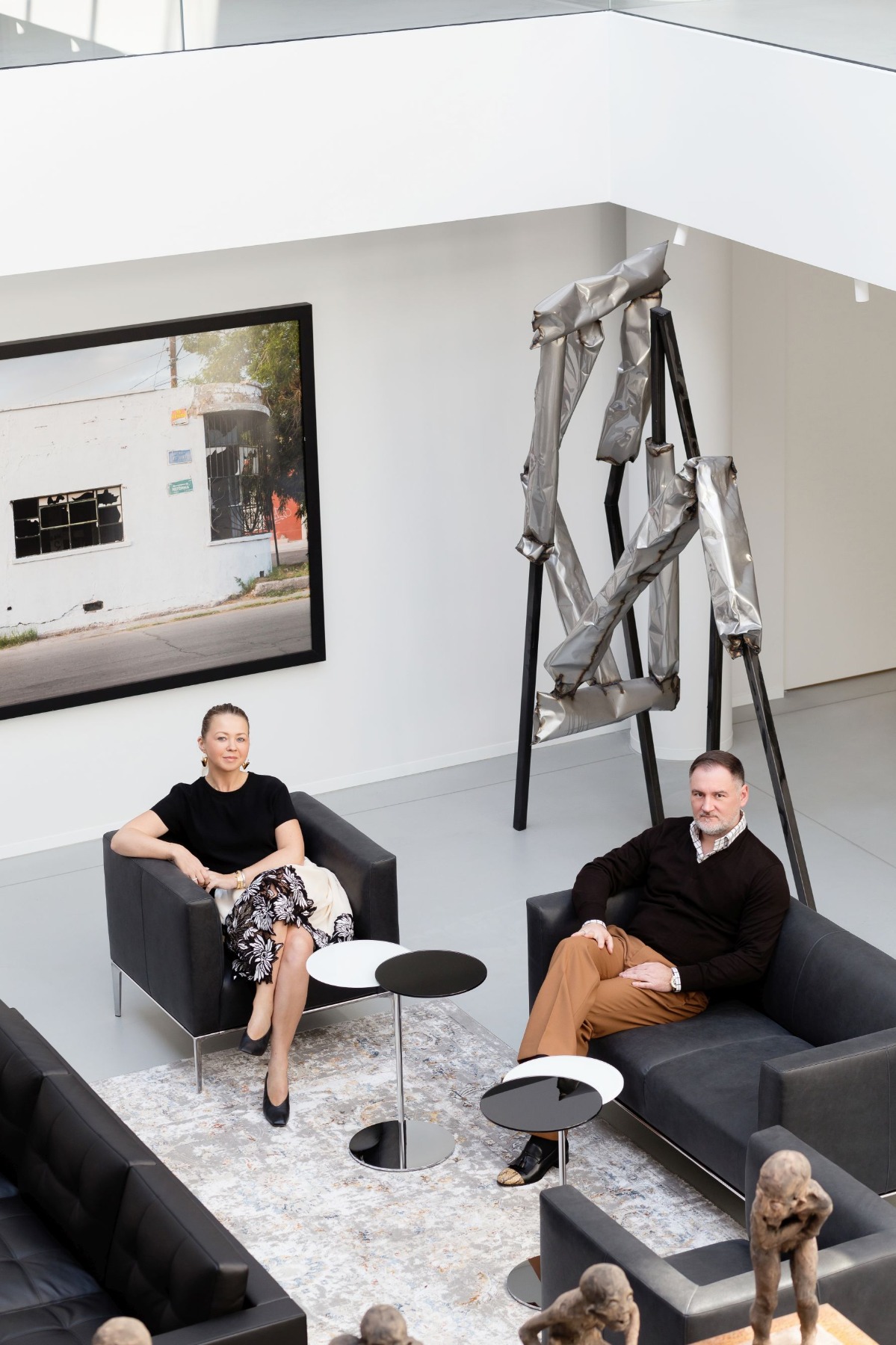
Rita, were there any unexpected discoveries when you became acquainted with this building and its history?
R. Kavaliauskienė: There were no big surprises, we knew the history of the building before moving in, but the old wall and ceiling paintings were a new discovery. It was also a huge personal discovery, how over time, the same premises can turn out to be so completely different. We had already inspected this house some six years ago, but the premises seemed unsuitable. Then, two years ago I perceived them quite differently and we realized that this was exactly what we were looking for. We signed the lease agreement for the building in 2022 and immediately started the installation work.
The house, built in 1890, was designed by the architect, V. Polozovas, to be residential, and was only a one-story building. In 1912, while the famous doctor Andrius Domaševičius lived there, the second floor was added and a gynaecological clinic was established there. During the period 1920–1927, Dr. Jonas Basanavičius also lived there. In 1940, the house came under state ownership and a court was located in it. However, the house was eventually returned to the owners in 1994 and in 1999 a trapezoidal extension was built in the courtyard. One can imagine how many different activities have taken place here and how diverse the life it has witnessed, was.
Architects Aurimas Syrusas and Greta Šidlauskaitė. Photo: Dovile Butenaite
What was the biggest challenge for architects in working with the heritage of the building, and combining it with the needs of its new owners?
A. Syrusas: The very idea of clients wanting to combine art and work spaces dictates a certain construct, which is why we created an art house for work. The concept for the interior was dictated by the structure and history of the building. The building has two wings: one represents the heritage of Lithuanian modernity [secession], with its many authentic polychrome paintings, mouldings and other elements, and the other, is an extension built at the beginning of independence. It is interesting because of its central space – an atrium with a glazed roof. Therefore, in principle, the interior can be divided into two parts, seemingly bearing two different characters, but both, typologically suitable for exhibiting art. We labelled the old part of the building ‘the museum’ and uncovered historically authentic, indelible layers there. The new part can be labelled ‘the gallery’ as it is a sterile, white, regular space dominated by the works of art.
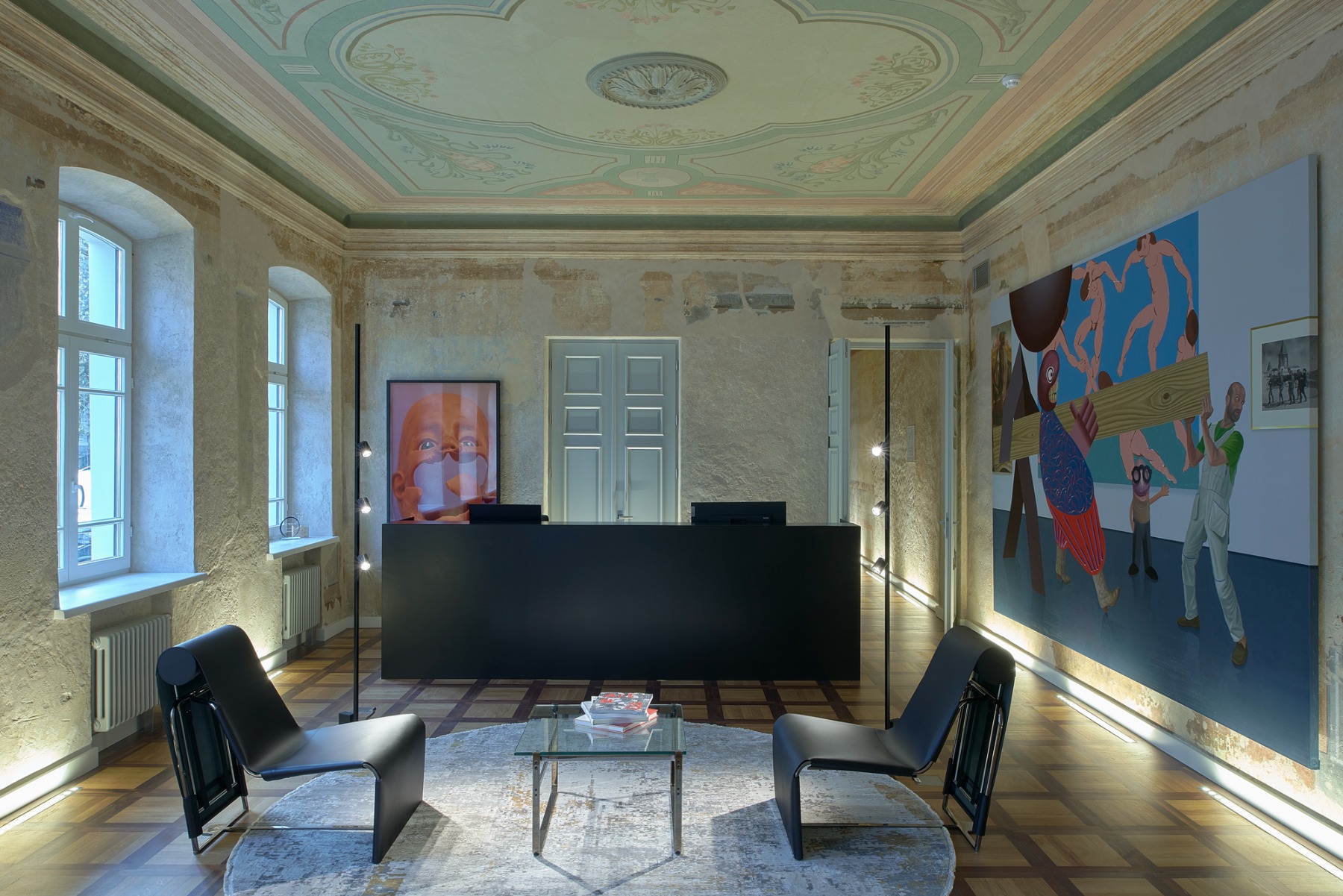
Photo: Darius Petrulaitis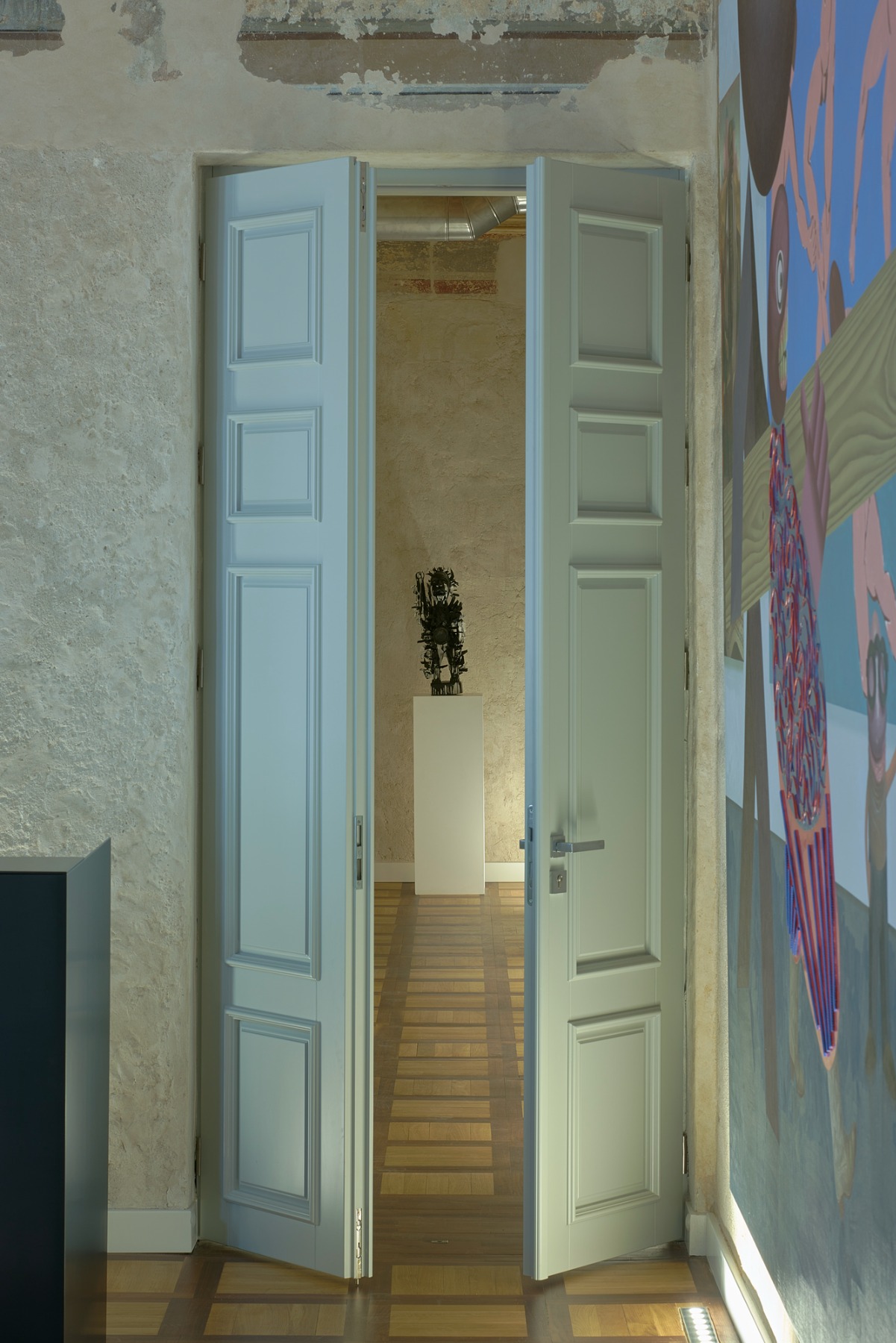
G. Šidlauskaitė: Perhaps the biggest goal, and therefore the biggest challenge, was to preserve the true history of the building in the old part – to uncover and make sense of these original layers and to reconcile them with the exhibits of contemporary art. The new part also contained a number of technical challenges, which always arise when striving to purify an idea. In the renovated old building, it was not very easy to preserve the orderliness and cleanliness of the spaces, but here, this was exactly the idea: to minimize the characteristic features of the space, so that the foreground would be modern art and the people who work there.
Photo: Darius Petrulaitis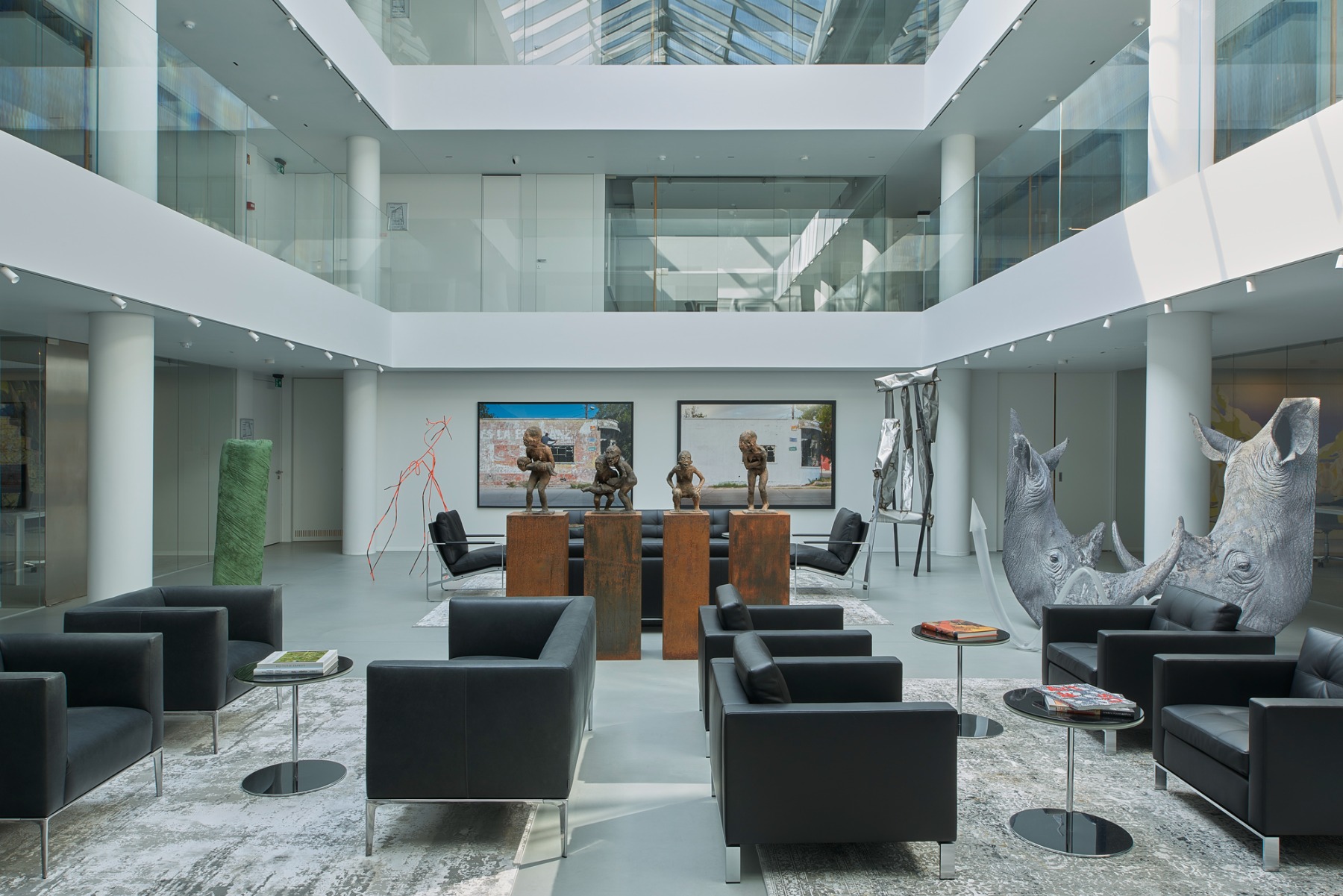
Photo: Darius Petrulaitis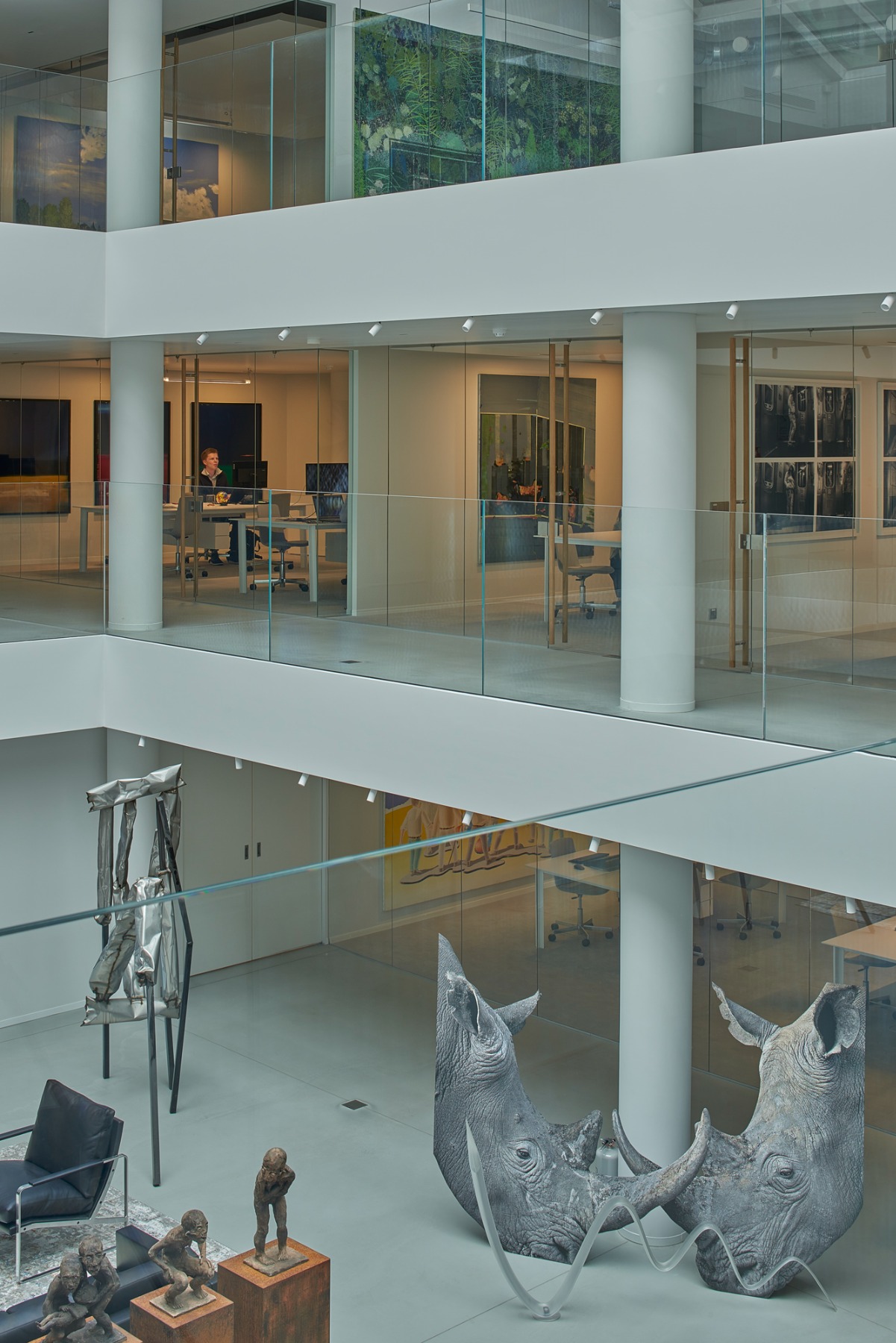
Ugnė, this building houses the Lewben Art Foundation’s art collection, which includes over 1500 works. You exhibit just over 170 pieces here, but this represents only a small part of the collection. On what principles did you select the works?
U. Bužinskaitė: It is estimated that world-famous museums usually only exhibit up to 5% of their collection. |Certainly, ours is not as large as that, and for the most part it is safely and securely stored in the depository. In the spaces of this office-museum building, we wanted to exhibit some of our best works. Of course, the possibilities are sometimes limited (due to size, weight, too narrow doors, etc.). Regarding some works, we immediately received inquiries from galleries and artists about whether we would be prepared to lend them to international museums. So, having just settled in, we are already considering what to replace some of the works on display, with. For certain walls or other places in these huge spaces, we chose and purchased works very specifically.
Ugnė Bužinskaitė, Director of the Lewben Art Foundation. Photo: Dovile Butenaite
What is the idea running like a red thread through the exposition? What message do all the exhibits send?
U. Bužinskaitė: Even though this building is not a pure office as it contains an exhibition, it is not a professional museum where curated exhibitions are held either. However, when we started working on the exposition, our idea, was to reflect what the Lewben Art Foundation collection is – contemporary, young, international, responsive to the current affairs of today’s world, and the trends in contemporary art. And so, here we can see the most relevant contemporary painting and photography in Lithuania, from Lithuanian artists who represented Lithuania at the Venice Biennale, still young, but conquering the world’s art markets, competing with contemporary foreign artists, and certainly, already world-famous stars of contemporary art.
We want visitors to the exhibitions and our colleagues from our business enterprises to raise questions, discuss contemporary art and grow with us into our future, visiting other art institutions, and certainly, the future Lewben Art Foundation art centre, on Bernardinų Street.
Photo: Darius Petrulaitis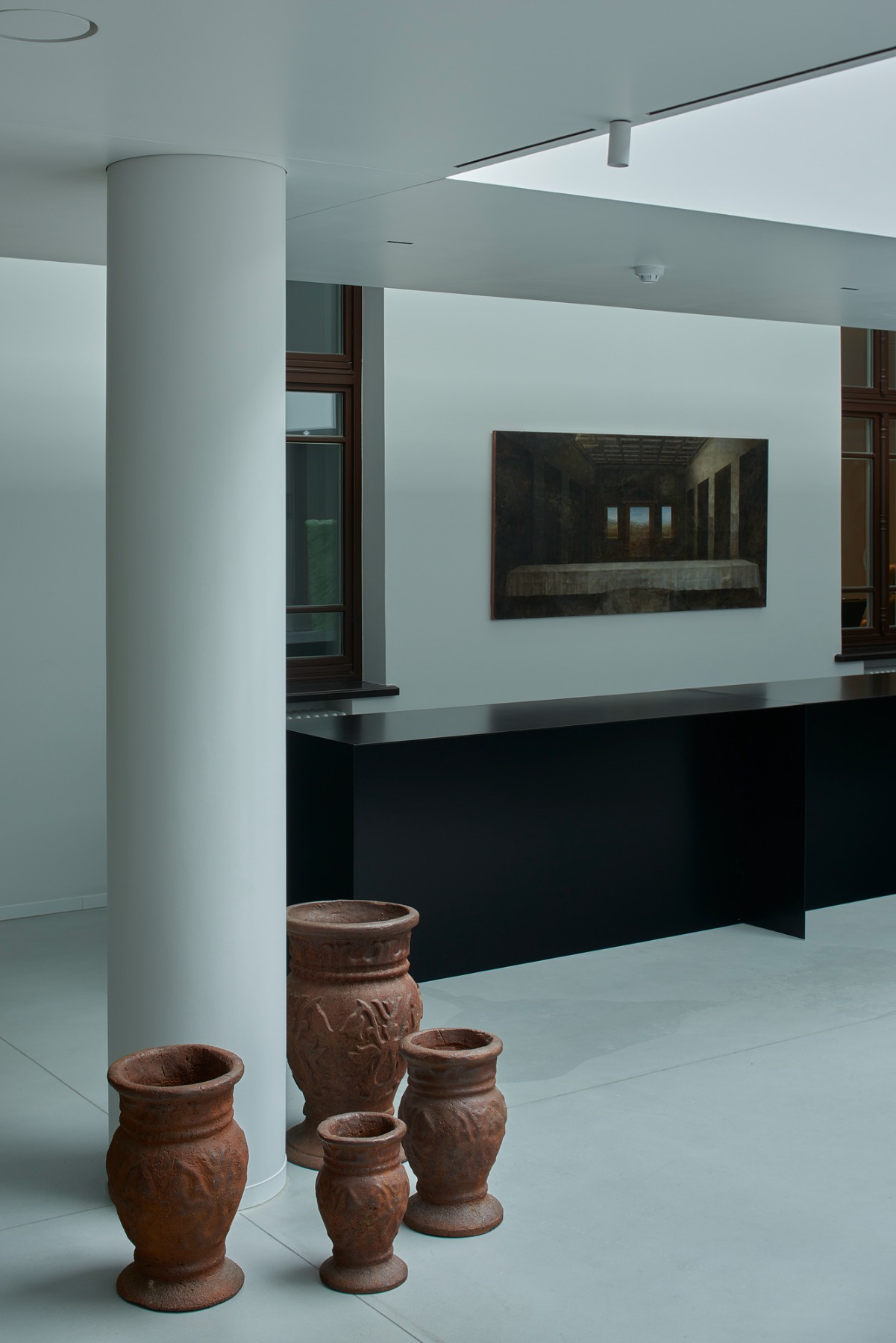
What became the axis of this exposition?
U. Bužinskaitė: We imagined that most likely it would be the largest space – the atrium with an exposition of sculptures. However, when people settled down, completely unplanned aspects come into play. For example, the most ‘instagrammable’, most interactive work has become the impressively sized painting by Jolanta Kyzikaitė, which is on display in the kitchen.
Photo: Darius Petrulaitis
Photo: Darius Petrulaitis
How do colleagues surrounded by so many different pieces react? Wasn’t there someone who didn’t really want to work in the vicinity of a particular piece of art? We all know that art always comes with a certain energy charge.
V. Kavaliauskas: Most respond to working in an artistic environment in a very positive way. Of course, there are some personal issues, and certain pieces of art may not be enjoyed by all. Still, the layout of the works of art was curated by my colleagues from the Lewben Art Foundation and myself, so it has been carefully thought out, because the goal was to reveal the current collection and decorate the office space. Not everyone understands this and does not always appreciate it. We are quite strict in our interior design and the arrangement of the works of art. After all, in a museum too, nothing changes its location according to the wishes of the visitors. But we have certainly made exceptions when someone didn’t like a particular work very much.
Photo: Darius Petrulaitis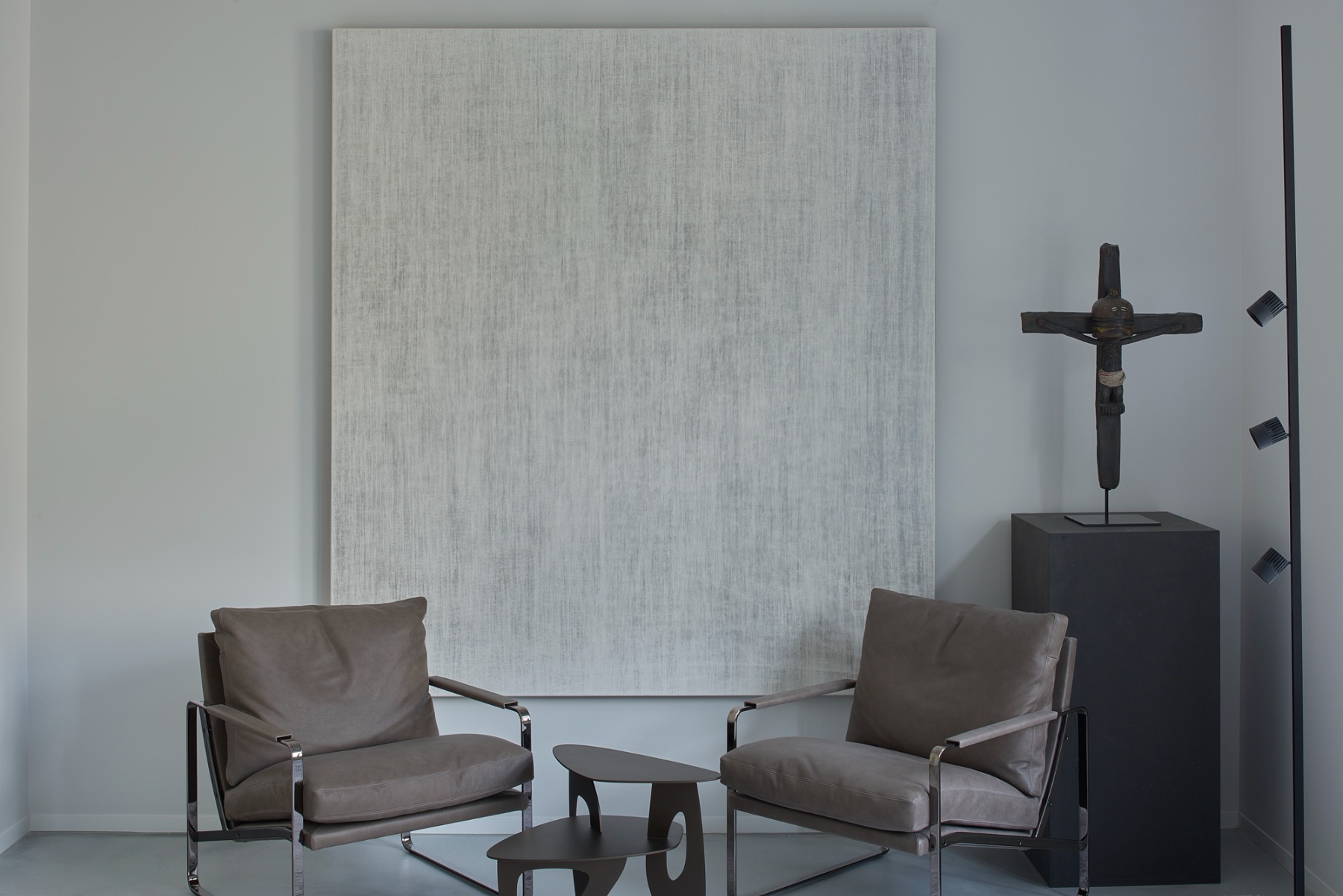
Photo: Darius Petrulaitis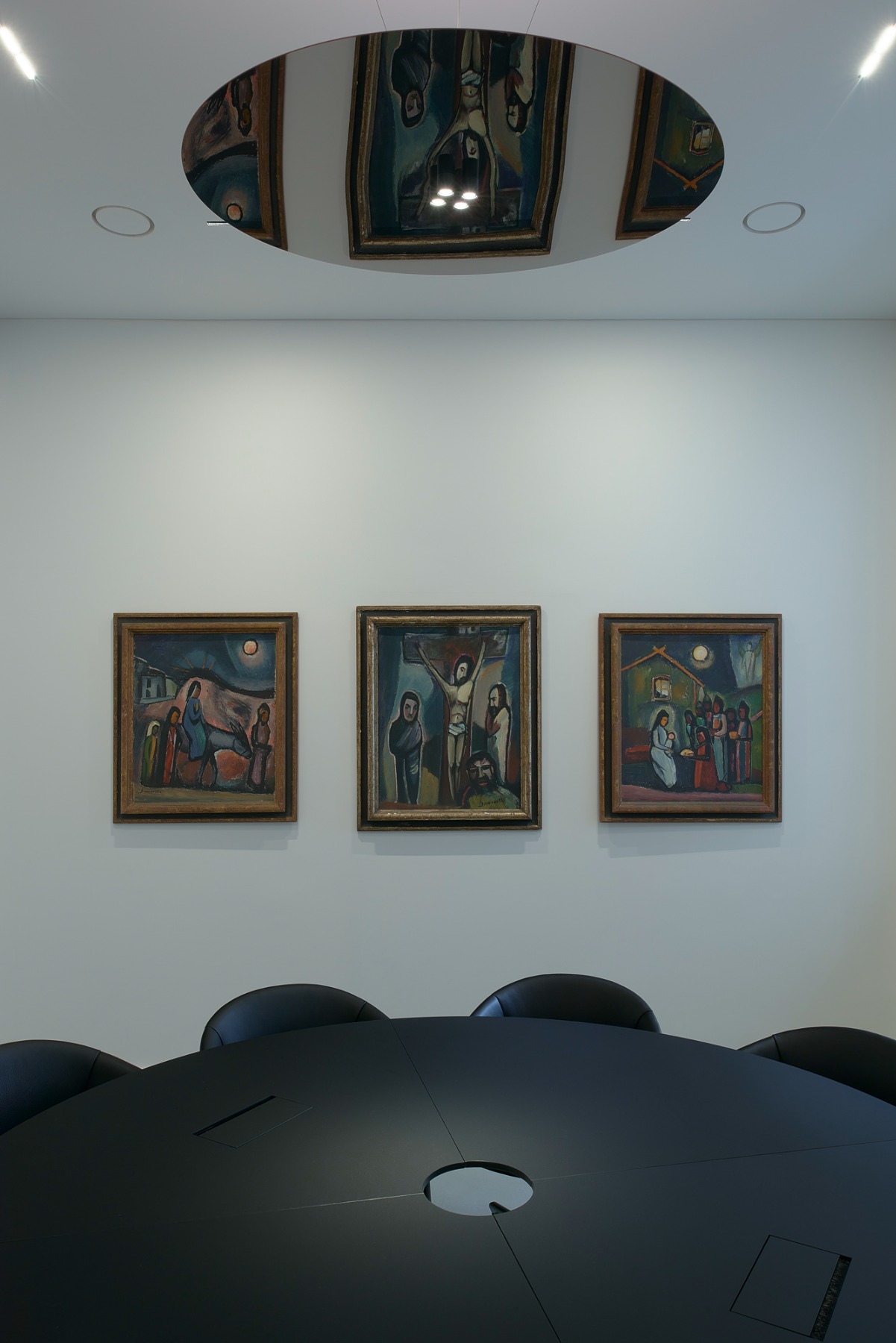
R. Kavaliauskienė: The works of art are the hallmark of the office, but for our colleagues, we try to create convenience as well. We have equipped a huge kitchen, a spacious and comfortable atrium both for relaxation and for work or informal meetings with guests, places for bicycles, and charging electric cars. We are also planning to equip a sports or recreation area. The building is not newly constructed, so we were restricted in certain contexts. For example, there are not many places for cars here, and the windows are not large, which also leads to lighting challenges. But this is the Old Town, which has its own advantages – a special aura, energy, environment, and people. We want to create a home environment, an atmosphere of transparency, openness, and co-working, and so, there are many common and open spaces.
Photo: Darius Petrulaitis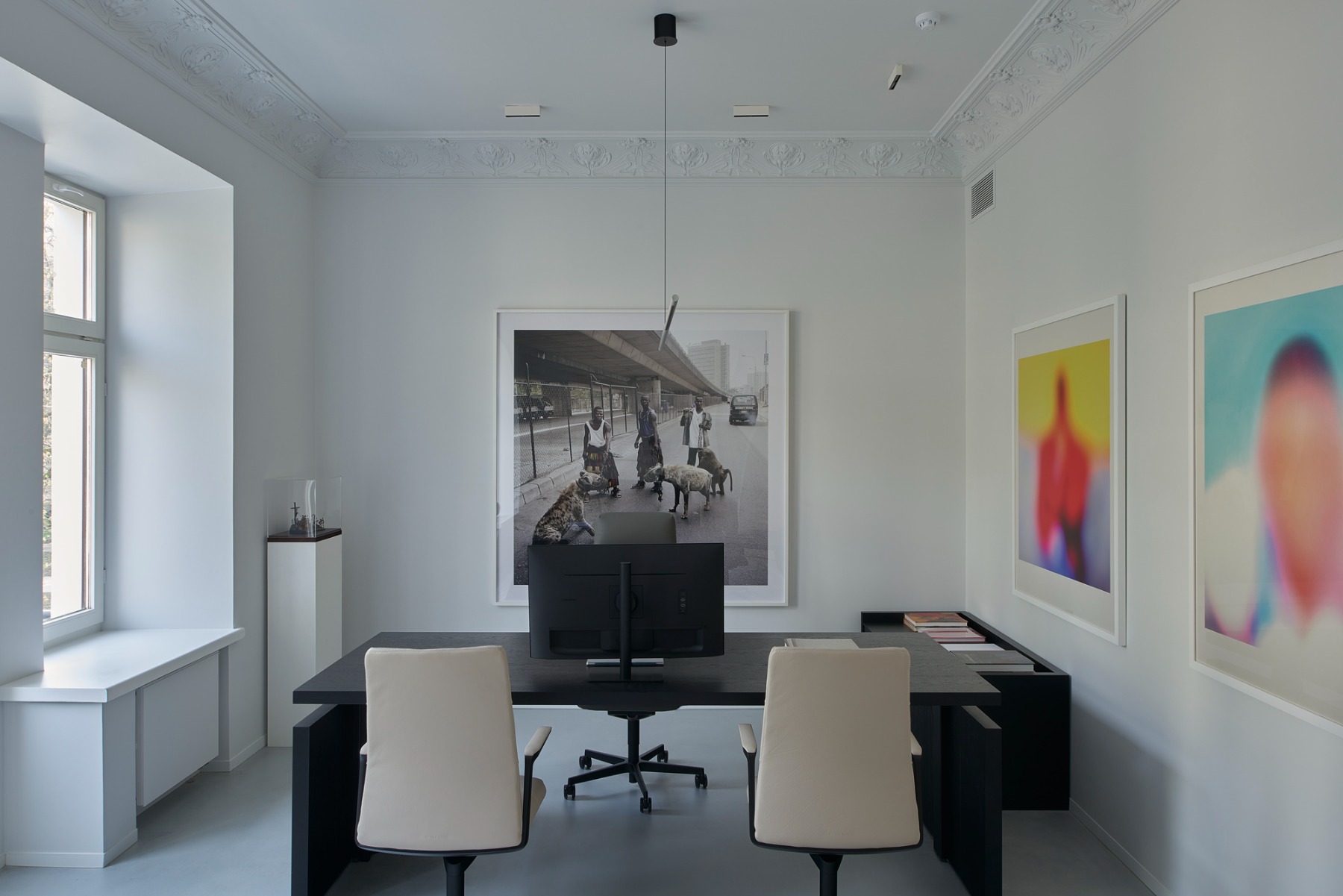
Photo: Darius Petrulaitis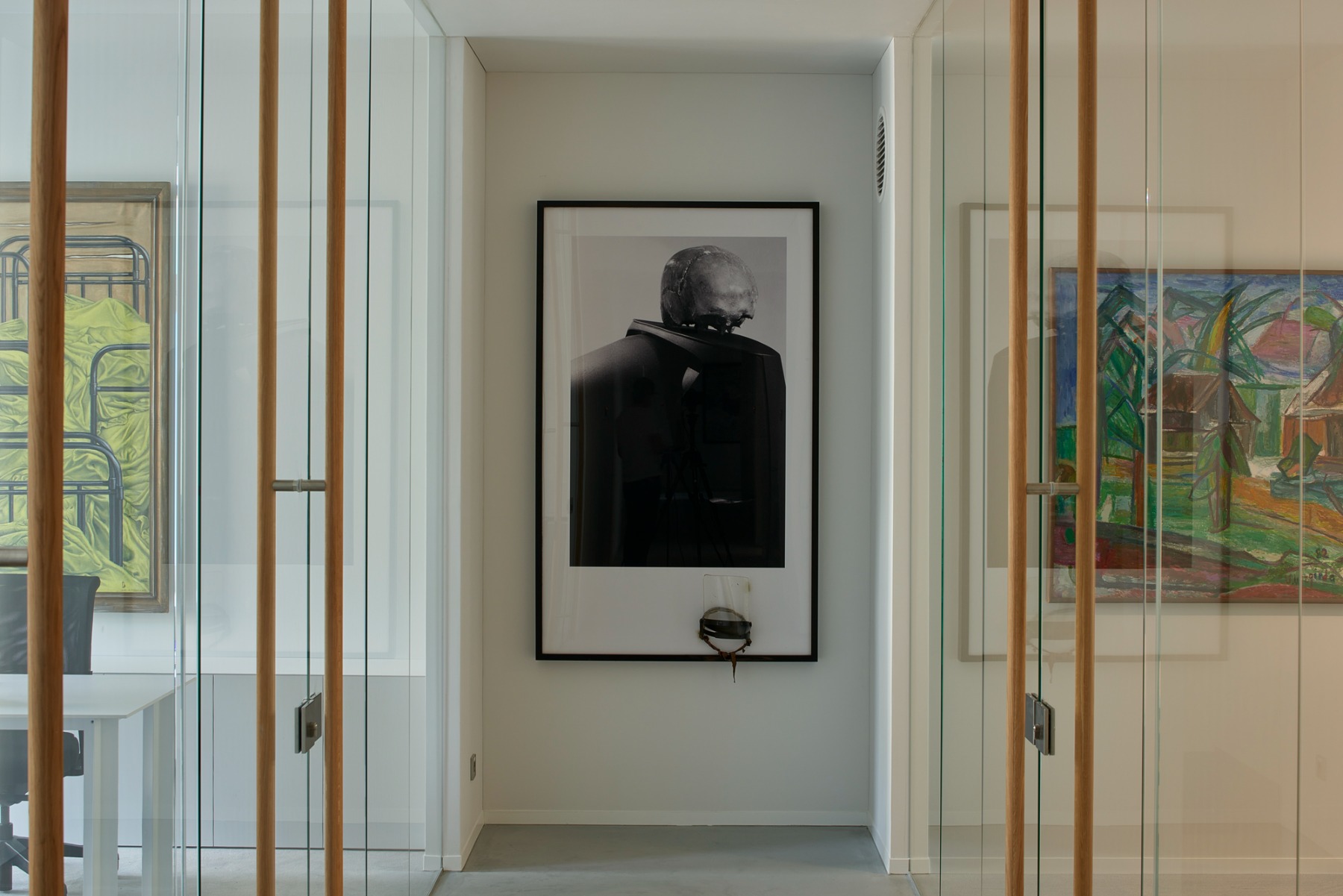
Will D9: Artsy Office only be open to your guests or to a wider audience in the future, too?
R. Kavaliauskienė: Certainly, it will be open to the Vilnius community and guests, only pre-registration will be required. It will be a kind of continuation of the premises on Bernardinų Street, where our Lewben Art Foundation is located. We will hold open days sometimes, and this year, we are also participating in the Open House Programme. Colleagues have been actively volunteering to greet guests and show them around our home.
Photo: Darius Petrulaitis